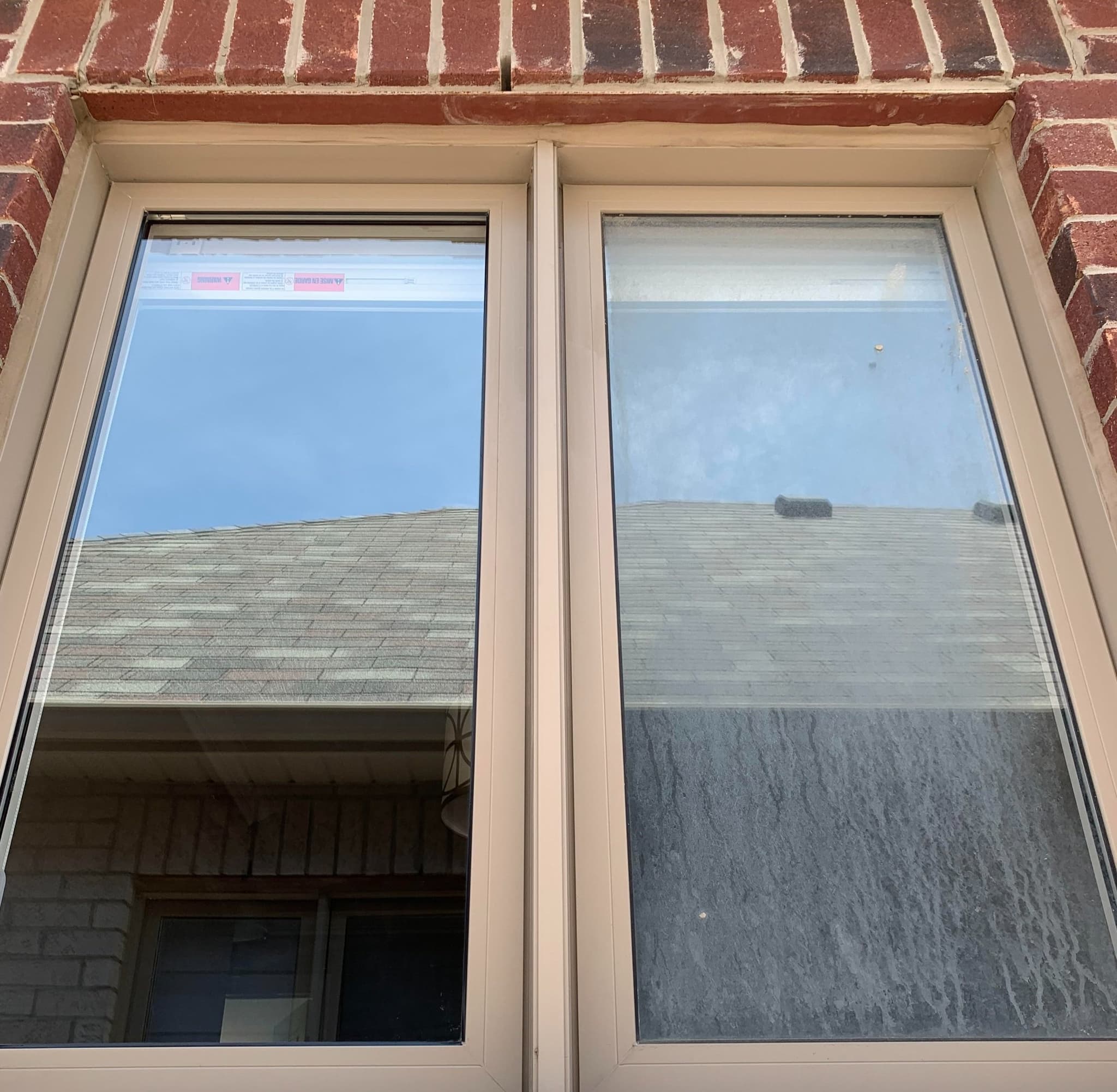How to Remove Stubborn Hard Water Stains from Windows

Hard water stains are one of the most frustrating window cleaning challenges homeowners face. These cloudy, white spots and mineral deposits seem impossible to remove with regular cleaning methods, but with the right techniques and products, you can restore your windows to crystal clarity.
Understanding Hard Water Stains
Hard water stains are caused by mineral deposits, primarily calcium and magnesium, that remain on glass surfaces after water evaporates. These deposits build up over time, creating increasingly stubborn stains that resist normal cleaning methods.
What Causes Hard Water Stains?
- Sprinkler overspray: Automatic irrigation systems hitting windows
- Rain runoff: Water flowing over mineral-rich surfaces
- Well water: High mineral content in groundwater sources
- Condensation: Regular moisture exposure in humid environments
- Neglected maintenance: Allowing deposits to accumulate over time
Professional-Grade Removal Methods
Method 1: Vinegar-Based Solutions
White vinegar is mildly acidic and can dissolve many mineral deposits effectively. This method works best for light to moderate staining.
Vinegar Solution Recipe
- 1 part white vinegar to 1 part warm water
- Add 1 tablespoon of dish soap per cup of solution
- Mix in spray bottle for easy application
Application: Spray generously, let sit for 5-10 minutes, scrub gently with non-abrasive pad, rinse thoroughly
Method 2: Commercial Lime and Calcium Removers
For stubborn stains, commercial products specifically designed for lime and calcium removal offer more concentrated cleaning power.
Recommended Products
- • CLR (Calcium, Lime & Rust)
- • Lime-Away
- • Bar Keepers Friend
- • Bio-Clean Hard Water Stain Remover
- • Professional glass restoration compounds
Safety Precautions
- • Always wear protective gloves
- • Ensure adequate ventilation
- • Test in inconspicuous area first
- • Never mix different chemicals
- • Keep away from children and pets
Method 3: Professional Glass Polishing
For severe etching and staining that has damaged the glass surface, professional polishing compounds can restore clarity by removing a microscopic layer of glass.
⚠️ Advanced Technique Warning
Glass polishing requires specialized equipment and experience. Improper technique can permanently damage windows. Consider professional service for valuable or difficult-to-replace glass.
Step-by-Step Removal Process
Preparation Phase
- Gather all necessary materials and safety equipment
- Choose appropriate weather conditions (overcast, mild temperature)
- Remove loose dirt and debris with initial rinse
- Test cleaning solution on small, inconspicuous area
- Protect surrounding areas from overspray
Treatment Phase
- Apply chosen cleaning solution generously to affected areas
- Allow dwell time as recommended (typically 5-15 minutes)
- Agitate gently with non-abrasive scrubbing pad
- Work in small sections to prevent solution from drying
- Reapply as needed for stubborn deposits
Finishing Phase
- Rinse thoroughly with clean water to remove all residue
- Squeegee or towel dry immediately to prevent new spots
- Inspect results and repeat treatment if necessary
- Apply protective coating if desired (see prevention section)
- Clean and store all equipment properly
Tools and Materials Needed
Cleaning Solutions
- • White vinegar
- • Commercial lime remover
- • Mild dish soap
- • Glass cleaner (for finishing)
Application Tools
- • Spray bottles
- • Non-abrasive scrubbing pads
- • Soft-bristled brush
- • Microfiber cloths
- • Squeegee
Safety Equipment
- • Protective gloves
- • Safety glasses
- • Old clothing/apron
- • Drop cloths
Prevention Strategies
Preventing hard water stains is much easier than removing them. Implement these strategies to minimize future buildup and keep your windows looking clear.
🛡️ Prevention Best Practices
Regular Maintenance
- • Clean windows monthly with pure water
- • Dry immediately after rain exposure
- • Apply water-repellent treatments annually
- • Address stains while they're fresh
Environmental Controls
- • Adjust sprinkler systems to avoid windows
- • Install water softening systems
- • Improve drainage around windows
- • Use deionized water for cleaning
When to Call Professionals
Some hard water damage requires professional intervention to avoid permanent damage or to achieve the best results.
Professional Service Recommended
- Severe etching that has damaged the glass surface
- High-value or difficult-to-replace windows
- Multiple failed DIY attempts
- Large-scale or commercial properties
- Safety concerns with height or access
Conclusion
Hard water stains don't have to be permanent fixtures on your windows. With the right approach, products, and techniques, you can restore clarity to even heavily stained glass. Remember that prevention through regular maintenance and water management is always easier than removal. For severe cases or valuable windows, professional glass restoration services can provide the expertise and equipment needed for optimal results.
Struggling with Stubborn Hard Water Stains?
Our professional team has the specialized equipment and expertise to remove even the most stubborn hard water stains and restore your windows to crystal clarity.